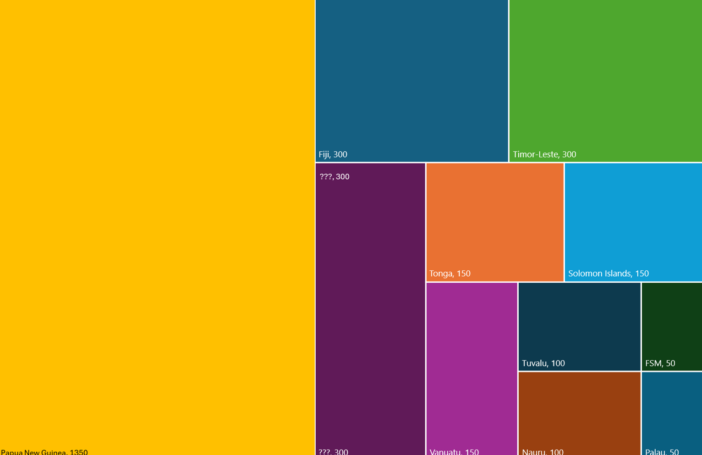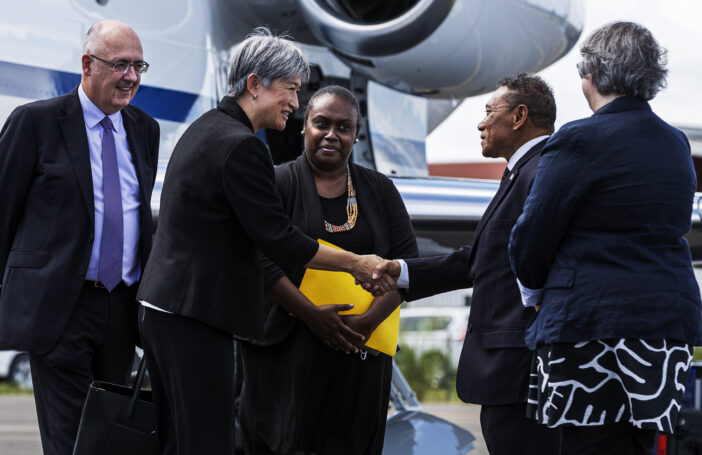When presented with an opportunity like Australia’s Pacific Engagement Visa (PEV) scheme, don’t demur. Grab it with both hands and be grateful. Other Pacific countries including Fiji are all ready to sign on the dotted line. It’s just basic common sense unless of course you live in Samoa, a country whose political leaders’ decision-making tells you that sense is not a very common commodity.
Our Minister of Finance, Lautimu’ia Va’ai, is reported by the media to have said last week that our people would not be denied the opportunity, but we need to be cautious and not rush into making a decision, implying that we need to have some regulation in place first “for our protection … It is not a missed opportunity because the opportunity will always be there forever.”
FOREVER! Really? What planet does the Minister hail from? We do not need regulation for people emigrating under the PEV scheme as they will be leaving permanently, unlike those going under the Pacific Australia Labour Mobility scheme for whom we need to negotiate work conditions and pay rates.
As one of my colleagues said cynically, “The only regulation we need is one that will protect us from corrupt politicians.”
The Minister also fears that buying into the PEV scheme “will have a major brain drain [for our country] going forward.” Yet, according to the Australian High Commissioner Will Robinson, “[t]he use of the ballot system will provide equal access for applicants regardless of skill level.” Very much like New Zealand’s Samoan Quota Resident Visa scheme by the sound of it.
We don’t often get opportunities like this that can lead to a better life for some of our people and subsequently our economy. Where would we be now as a country, economically, had many of our people including thousands with skills and qualifications not left the country for a better future in New Zealand, Australia or the United States?
One of the major drivers of our economy is the hundreds of millions of dollars in remittances sent back by those very people — $776 million for the year 2022-23 when total government revenue was forecast at $895.5 million.
Leader of the Opposition, Tuila’epa Sa’ilele pointed this out by reminding the government that our people who have migrated overseas had contributed a lot to the development of the country by remitting money back to Samoa, stressing the importance of the government intervening to secure opportunities – like what the PEV Scheme offers – for our people.
I doubt many will disagree. It is the dream of every Samoan, skilled and semi-skilled, earning a below-average income, to emigrate to Australia or New Zealand to raise their family and earn a decent income. To deny them that opportunity for fear of “brain drain” on our work force is an ignoramus’s way of saying to them: “Endure your current situation. You don’t deserve any better.”
Every country, developed, developing, or under-developed, experiences “brain drain” as its citizens leave for greener pastures elsewhere. New Zealand for example lost 47,000 skilled workers last year alone – doctors, nurses, teachers, and tradespeople — mainly to Australia where they’ll be getting paid twice what they got in New Zealand. Yet, never once did the government consider placing roadblocks in front of them because it believed that the experience they bring with them when they return in the future can only be good for the country. Instead, they have in place a scheme strongly backed by businesses and industries through their training organisations to ensure that skill gaps appearing in any of the industries are plugged.
Samoa has benefited greatly from the decision by some of our people to migrate. Their well-qualified and highly skilled children and grandchildren are here serving our country in all spheres, legal, medical, education, trades, commerce, you name it. And their education did not cost our government a cent.
We’ve been complaining about this “brain drain” for the last 50 years but we do not seem to be able to come up with a concrete plan to ensure we have enough skilled workers and tradespeople coming through our education and vocational training system to replace those leaving the country. If we do have one, it doesn’t seem to be working.
It’s a problem that can be easily remedied but we need to begin by promoting and raising the profile of vocational education and trades training, starting at school. For example, two years ago my son, who is now 19 years old, was a year 12 student at college in New Zealand. He showed no interest in his schoolwork. I went and talked to his school’s career advisor suggesting that he be placed with a building and construction industry contractor for work experience one day a week for the whole school year until he’d decided on what he wanted to do. He’s now in his second year of an apprenticeship (carpentry) and loving it.
The beauty of the New Zealand system lies in the schools, industry training organisations and employers who, with the support of the New Zealand Qualifications Authority, all work together to set career pathways for students to follow once they leave school.
For too long, we’ve been brain-washed to believe that the only form of post-school education that is worthwhile having is that offered by universities. Unfortunately, many students do not have the propensity to succeed academically. Therefore, when some of them leave school without a Senior Secondary Certificate, they feel they have failed.
My advice to the Minister: Brain drain should not be a big issue if we have an effective training scheme to plug any skill gaps. And remember: Our people are our biggest and most valuable export. So, “Don’t kill the goose that lays the golden egg for our country.”
This blog was first published on the Samoa Observer website.





Mika, Your criticism of the Government of Samoa’s delayed response to Australia’s offer of access to its new Pacific Engagement Visa (PEV) falls short on one detail. You state at the end of your commentary that ‘brain drain should not be a big issue if we have an effective training scheme to plug any skill gaps’. Not this is not as simple as it sounds.
To address potential brain drain, information is needed on the occupations and industry sector of those granted a visa. This is not available at present in the case of the Samoa Quota.
The Government of Samoa needs to request the Australian Government to collect this highly relevant information from those selected in the ballot when they apply for their visa. Visa applicants (but not those merely registering for the ballot) should be asked to say in two or three words what their current occupation in Samoa is (eg secondary school teacher or registered nurse). They should also be asked to identify from a list what sector of the economy they work in.
This information request should also be made to the New Zealand Government for its Samoan Quota visa applicants. The quota for this visa is far larger (1,100 persons each year plus a further 550 extra places each year until 2026) than the quota for the PEV is likely to be, which is yet to be announced but is likely to be about 100, based on Samoa’s resident population size.
In this way, the Government of Samoa can work out where the skill gaps in the labour force will be. But training required often takes time. There can be a delay of several years while the new trainees acquire the skills in demand.
Although the ballot ensures that everyone who registers has an equal chance of selection, those granted a visa are likely to be different in their socio-economic profile. The PEV requirements for a primary visa applicant to have a formal ongoing job offer in Australia and to have basic English language skills will determine who gains a visa. This means that most, if not all, PEV primary applicants will come from the formal economy because they will need to have the skills in demand in Australia to get an ongoing job. In addition, the high cost of settling a family in Australia will ensure only those applicants with enough savings are likely to migrate.